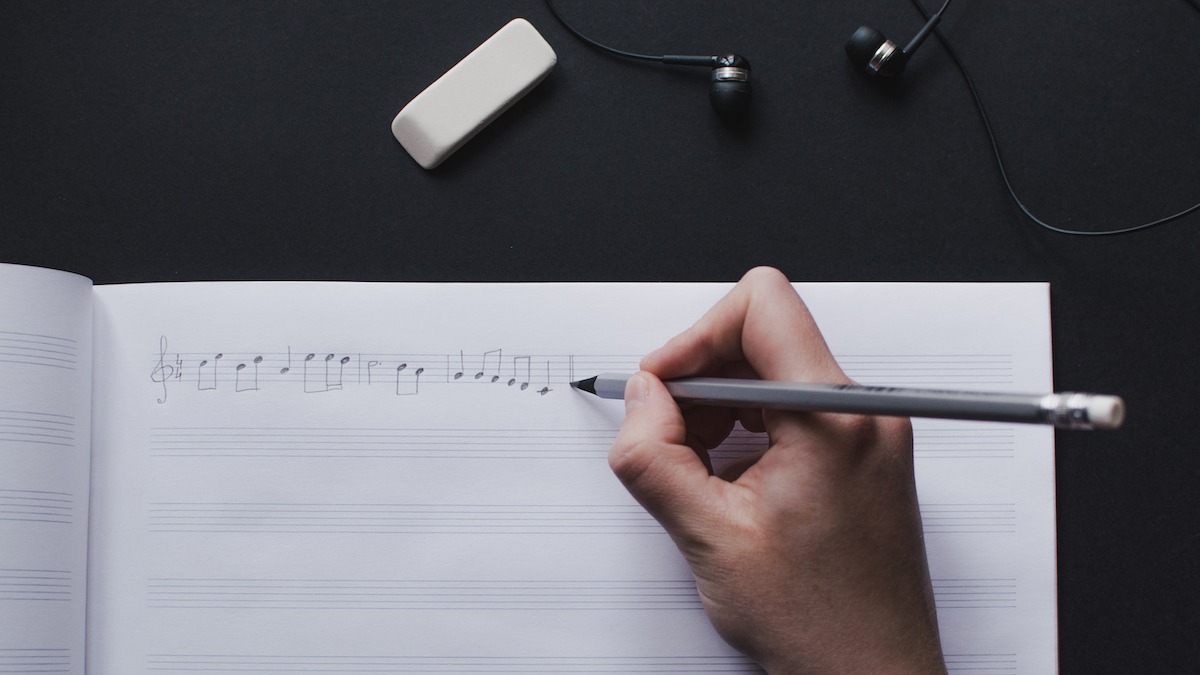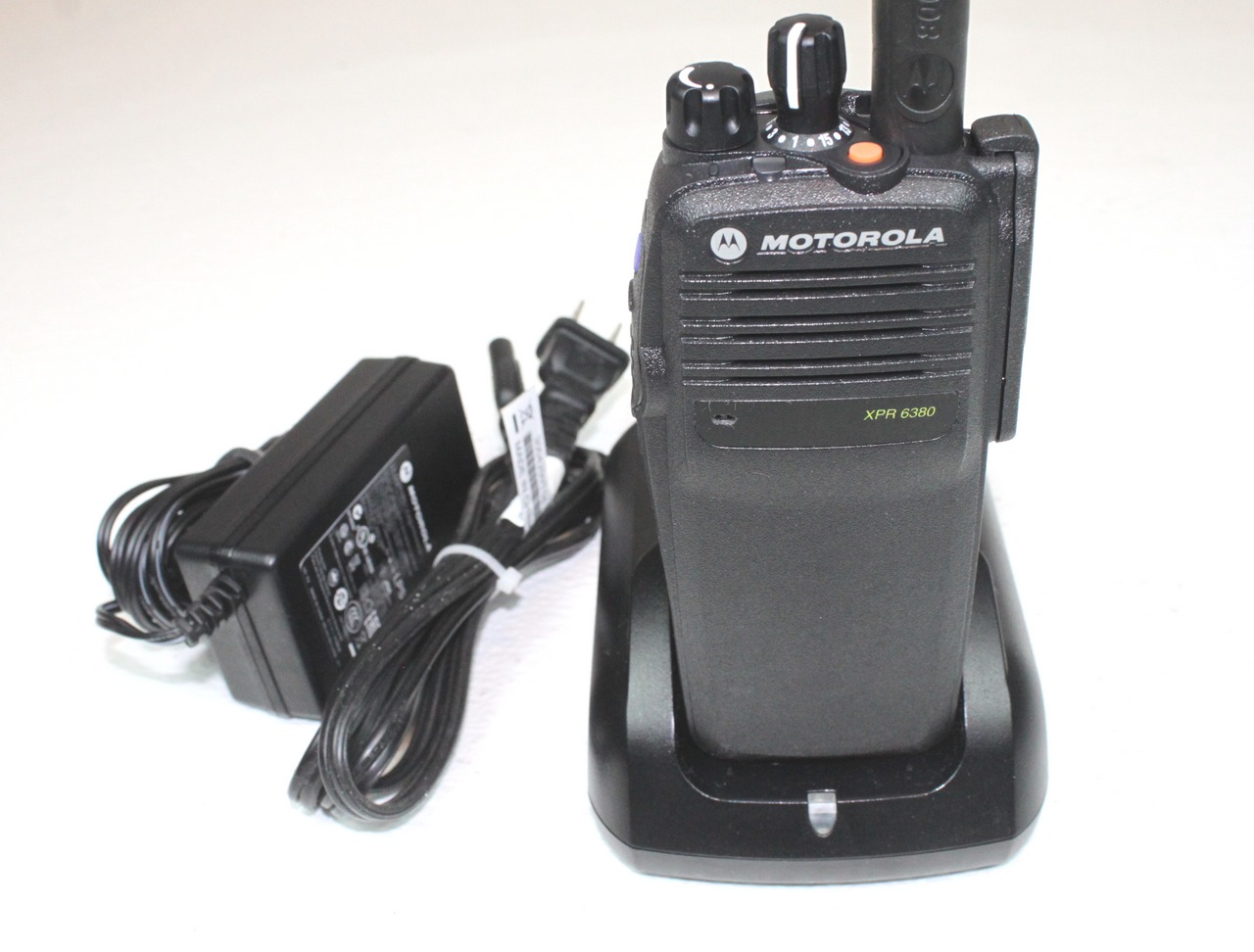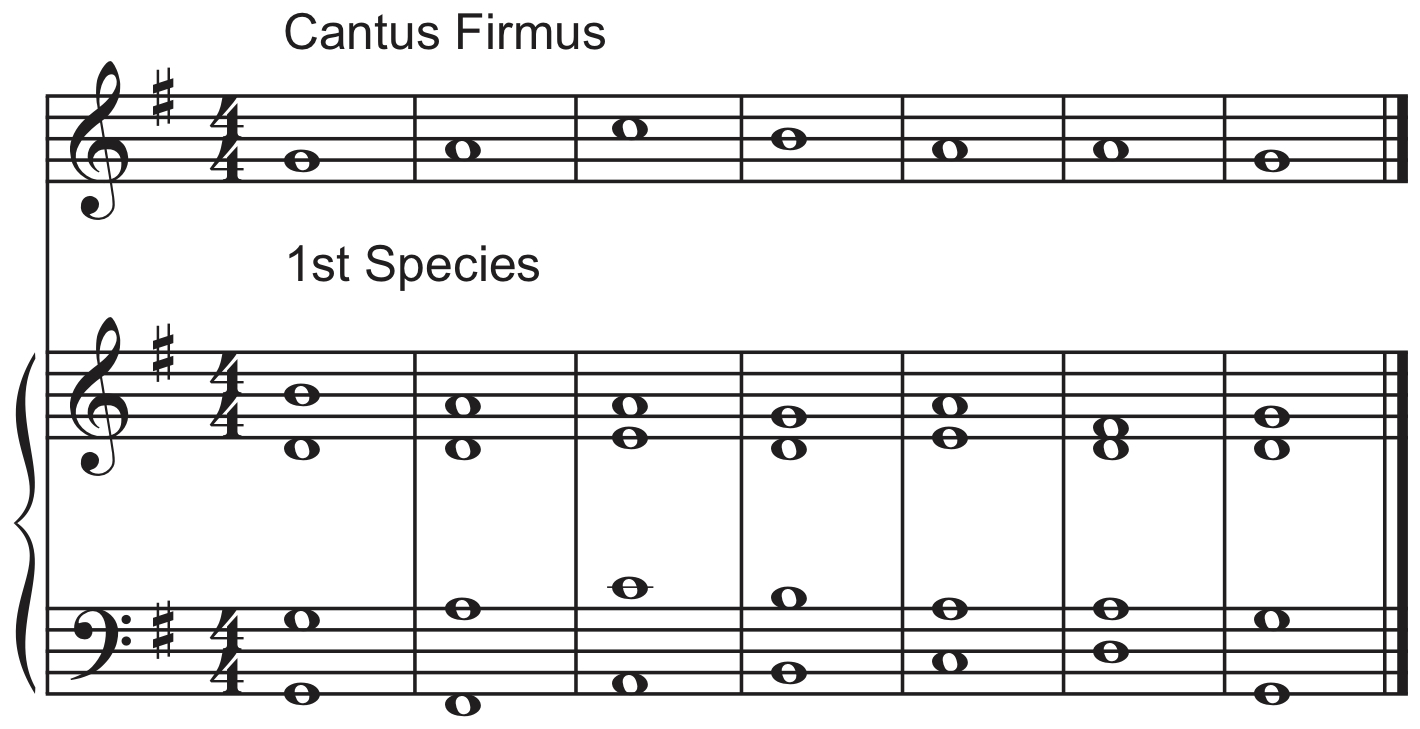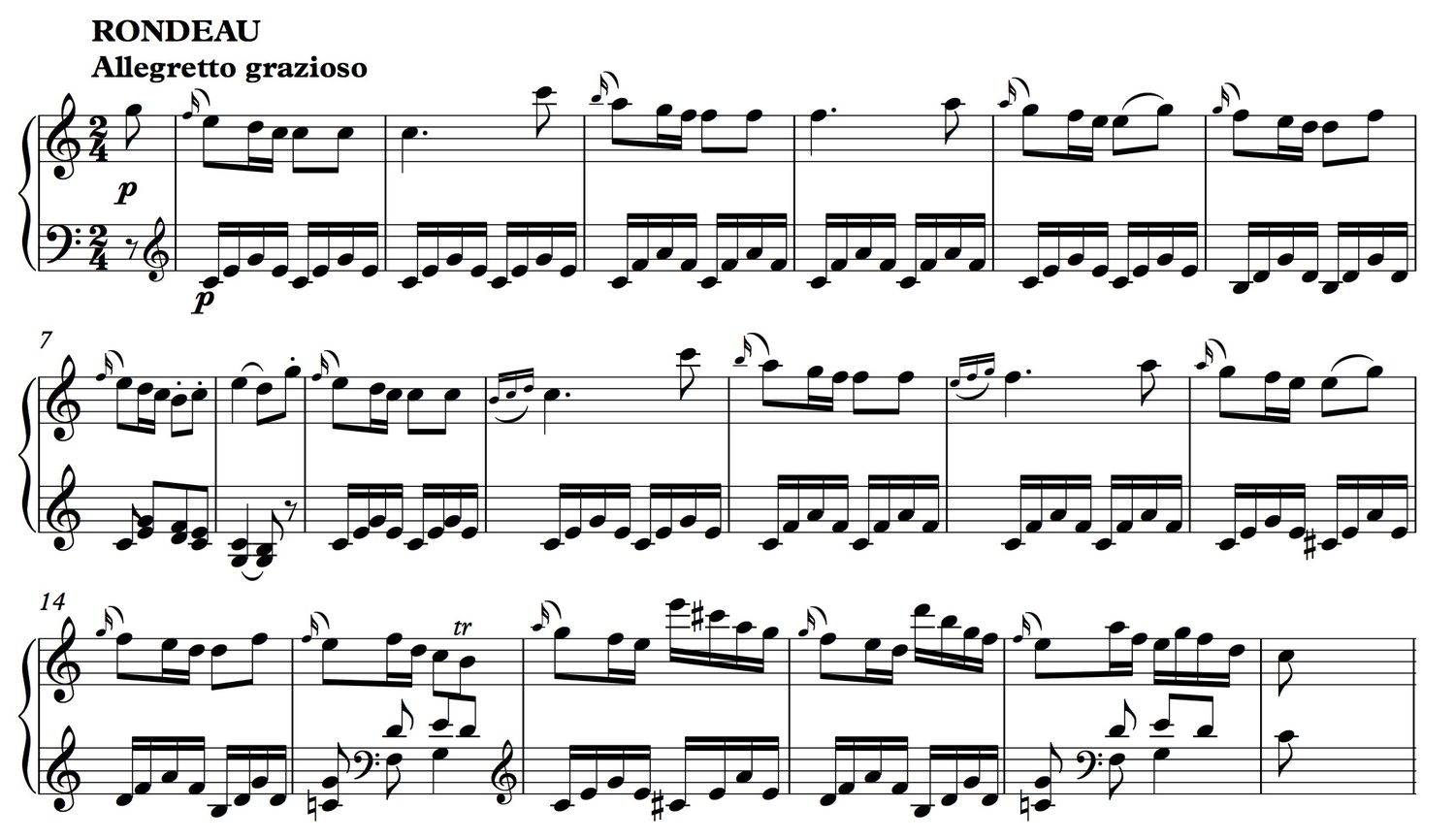Home>Events & Info>Note>How To Write A Program Note For Music


Note
How To Write A Program Note For Music
Modified: January 22, 2024
Learn how to write a program note for music, including the essential elements of a note and tips for effective communication. Perfect for composers and performers.
(Many of the links in this article redirect to a specific reviewed product. Your purchase of these products through affiliate links helps to generate commission for AudioLover.com, at no extra cost. Learn more)
Table of Contents
- Introduction
- Understanding Program Notes
- Step 1: Gather Information
- Step 2: Research the Composer and Piece
- Step 3: Identify Key Musical Elements
- Step 4: Describe the Structure and Form
- Step 5: Analyze the Harmony and Melody
- Step 6: Examine the Instrumentation and Orchestration
- Step 7: Provide Historical Context
- Step 8: Discuss the Performance Considerations
- Step 9: Write the Program Note
- Step 10: Edit and Revise the Program Note
- Conclusion
Introduction
Program notes play a crucial role in enhancing the concert experience for both musicians and audiences alike. They provide valuable insights into the music being performed, helping to create a deeper understanding and appreciation of the composition.
Whether you are a musician, a music critic, or simply a lover of classical music, learning how to write a compelling program note is a valuable skill. A well-crafted program note not only informs the audience about the composer, the piece, and its historical context, but also adds an extra layer of richness to the performance.
In this article, we will guide you through the process of writing a program note that engages and enlightens the readers. We will explore the important steps and aspects to consider to ensure your program note is informative, engaging, and captures the essence of the music.
So, whether you are writing a program note for a symphony, a chamber music recital, or any other musical performance, let’s dive into the world of program notes and discover how to make them effective and memorable.
Understanding Program Notes
Before we delve into the process of writing a program note, it’s important to understand the purpose and significance of this document. Program notes serve as a bridge between the composer, the performer, and the audience, providing a deeper understanding and context for the music being performed.
A well-written program note can provide valuable insights that enhance the audience’s appreciation and enjoyment of the music. It can introduce the composer and their background, discuss the key musical elements, describe the structure and form of the piece, and provide historical context. Additionally, program notes may also highlight performance considerations and provide guidance to the performers.
Program notes serve as educational tools, helping the audience engage with the music on a deeper level. They can be used to explore the emotions and intentions behind the composition, shedding light on the historical and cultural context in which it was created. By providing this information, program notes enable the audience to develop a more informed and meaningful connection with the music.
For performers, program notes serve as a guide to help them better understand the music they are playing. By studying the program notes, musicians can gain insights into the composer’s intentions, important musical themes, and the historical context of the piece. This knowledge can help shape their interpretation and performance, elevating the overall experience for both themselves and the audience.
Ultimately, the goal of a program note is to enhance the listener’s experience by deepening their understanding and appreciation of the music. It should be informative, engaging, and written in a way that entices the reader to explore the performance with a fresh perspective.
Now that we have a clear understanding of the purpose of program notes, let’s dive into the step-by-step process of writing an effective one.
Step 1: Gather Information
Before embarking on the process of writing a program note, it’s crucial to gather all the necessary information about the piece you will be discussing. This includes details about the composer, the composition itself, and any relevant historical or contextual information.
Start by researching the basic information about the composer, such as their background, influences, and notable works. Understanding the composer’s style and the period in which they lived can provide valuable insights into their compositional approach.
Next, gather information about the specific piece you will be discussing. Learn about its title, date of composition, and any significant events or circumstances surrounding its creation. Additionally, investigate any unique features or characteristics that set the composition apart.
Collect details about the genre or style of the composition. Is it a symphony, a sonata, a concerto, or something else? Understanding the specific genre can provide important context for the piece.
Furthermore, look for any historical or cultural events that may have influenced the composition. Consider the political, social, or artistic climate in which the composer was working, as it can shed light on the motivations and intentions behind the music.
Lastly, gather any performance-related information. This may include details such as the instrumentation, the duration of the piece, notable performers or recordings, and any specific technical challenges or requirements.
By thoroughly gathering all the necessary information, you will lay the foundation for writing a comprehensive and informed program note. This step is crucial as it enables you to approach the writing process with a solid understanding of the composer, the composition, and its historical and musical significance.
Step 2: Research the Composer and Piece
Once you have gathered the basic information about the composer and the piece, it’s time to delve deeper and conduct thorough research. This step will provide you with a deeper understanding of the composer’s life, their artistic influences, and the specific characteristics of the composition.
Begin by researching the composer’s biography. Read about their upbringing, education, and any significant events or experiences that shaped their musical journey. Understanding the composer’s background can provide valuable insights into their compositional style and artistic motivations.
Next, explore the composer’s musical influences. Investigate the composers or musical movements that inspired and influenced their work. By understanding these influences, you can gain a better grasp of the compositional style and techniques employed in the piece.
Study the composer’s other works. Listen to their other compositions and analyze their musical language. Look for recurring themes, distinctive stylistic elements, and unique approaches to harmony, melody, and form. This research will help you establish connections between the piece you are writing about and the composer’s wider body of work.
Now, focus on the specific piece you will be discussing. Examine its compositional style and techniques. Determine the genre and form of the composition. Is it a sonata, a symphony, a concerto, or something else? Identify the key musical elements such as the overall structure, thematic development, harmonic progression, and melodic motives.
Listen to recordings of the piece to familiarize yourself with its sound and interpretation. Take note of different performances and interpretations, as they can provide valuable insights into the possibilities and nuances of the composition.
Finally, explore any historical or cultural context that may have influenced the creation of the piece. Look for factors such as political events, societal norms, or artistic movements of the time. Understanding the piece within its historical context can provide a deeper appreciation and interpretation of its meaning.
By conducting thorough research on the composer and the specific piece, you will gather the knowledge needed to write an informed and insightful program note. This step is crucial in presenting accurate and engaging information to the readers, enhancing their understanding and appreciation of the music.
Step 3: Identify Key Musical Elements
Once you have conducted thorough research on the composer and the piece, it’s time to analyze the key musical elements of the composition. This step involves identifying and understanding the fundamental aspects that shape the music and contribute to its artistic merit.
Begin by examining the overall structure of the piece. Identify the different sections or movements and note how they are organized. Is it a three-movement structure commonly found in a concerto or a four-movement structure typical of a symphony? Understanding the structure will help you guide the reader through the journey of the composition.
Next, focus on the thematic material. Look for recurring themes or motifs that appear throughout the piece. Analyze their development and variations, and explore how they are used to create cohesion within the composition. Consider the melodic, rhythmic, and harmonic characteristics of these themes.
Study the harmonic progression of the piece. Identify the key centers and modulations, and observe how they contribute to the overall musical narrative. Analyze the use of consonance and dissonance, and note any unique harmonic techniques employed by the composer.
Consider the rhythmic structure and rhythmic devices used within the composition. Look for syncopation, polyrhythms, or unconventional time signatures. These rhythmic elements can add depth and complexity to the music, and understanding them will help you convey the composer’s intentions to the reader.
Take note of any significant melodic or thematic transformations that occur throughout the composition. These transformations can be in the form of variations, development, or reiterations of musical ideas. Understanding these transformations will provide insight into the composer’s creative process.
Lastly, analyze the dynamics and expressive markings. Observe how the composer guides the performers and shapes the emotional landscape of the piece through dynamic changes and expressive indications. Note any unique interpretive markings that are essential to understanding the intended performance characteristics.
By identifying and analyzing these key musical elements, you will be able to provide a comprehensive understanding of the composition’s musical language and structure in your program note. This step is essential in guiding the readers through the intricacies and artistic choices made by the composer.
Step 4: Describe the Structure and Form
Describing the structure and form of the composition is a crucial aspect of writing an informative program note. The structure and form provide the framework that holds the music together, allowing the listener to navigate through the different sections and understand the overall organization of the piece.
Begin by identifying the overarching structure of the composition. Is it a single-movement work, or does it consist of multiple movements? If it has multiple movements, describe their individual characteristics and how they contribute to the overall narrative of the piece.
Next, delve into the form of each movement or section. Identify the specific form employed, such as sonata form, rondo form, or theme and variations. Describe how the composer adheres to or deviates from these traditional forms, and discuss any unique structural elements that contribute to the piece’s overall shape.
Explore the relationship between sections or movements. How do they connect, and what transitions or thematic links are present? Describe how the composer manages the flow and coherence between the different parts of the composition.
Examine any noteworthy moments within the structure and form. Are there climactic points, contrasting sections, or moments of tension and release? Discuss the impact of these moments on the listener’s experience and their contribution to the overall structure.
Consider any programmatic or narrative elements that exist within the structure. Does the composer tell a story or evoke a specific emotion through the musical form and structure? Explain how these elements are incorporated and how they enhance the listener’s understanding and engagement.
In your program note, provide a clear and concise description of the structure and form, using language that is accessible to readers of varying musical backgrounds. Strive to create a narrative that guides the reader through the composition, helping them navigate and appreciate the carefully crafted architecture of the music.
By describing the structure and form, you will provide a valuable roadmap for the readers, allowing them to understand the organization and development of the composition, and enabling a deeper engagement with the music during the performance.
Step 5: Analyze the Harmony and Melody
As we continue our journey of writing an effective program note, it’s important to analyze the harmony and melody of the composition. Harmony and melody play a vital role in shaping the musical landscape and evoking emotional responses from the listener.
Start by examining the harmonic language of the piece. Identify the different harmonic progressions and chord qualities utilized by the composer. Take note of any dissonant or chromatic passages that add tension or color to the music. Analyze the relationship between harmonies and how they contribute to the overall emotional arc of the composition.
Explore the use of key centers and modulations within the piece. Identify the main key(s) of the composition and observe how the harmonic progressions move between different tonal areas. Describe any key changes or modal shifts that occur and their significance within the musical narrative.
Next, focus on the melodic elements of the composition. Analyze the main themes and motifs that appear throughout the piece. Describe their melodic contour, rhythmic character, and expressive qualities. Identify any variations or developments of these melodic ideas and discuss their impact on the overall musical journey.
Examine the relationship between harmony and melody. How do they interact and support each other within the composition? Describe instances of melodic embellishments, sequences, or melodic transformations that occur within the piece. Discuss how these melodic elements contribute to the overall structure and emotional impact of the music.
Consider the use of counterpoint or polyphony within the composition. Identify any instances of multiple voices or independent melodic lines and describe how they interact with each other. Discuss the contrapuntal techniques employed and their effect on the overall texture and complexity of the music.
In your program note, aim to present the analysis of the harmony and melody in a clear and concise manner, using language that is accessible to readers of varying musical backgrounds. Focus on highlighting the unique and defining characteristics of the harmonies and melodies and how they contribute to the expressive qualities of the piece.
By analyzing the harmony and melody, you will provide valuable insights into the compositional techniques utilized by the composer. This step will help the readers better understand the emotional impact of the music and deepen their appreciation for the harmonic and melodic choices made within the composition.
Step 6: Examine the Instrumentation and Orchestration
Exploring the instrumentation and orchestration of a composition is essential when writing a program note. The choice and arrangement of instruments directly impact the overall sound and character of the music. Understanding the instrumentation and orchestration will enrich the reader’s perception of the composition and provide insights into the composer’s creative decisions.
Begin by examining the instrumentation, which refers to the specific instruments or vocal forces used in the composition. Identify the primary instruments or vocal parts and describe their roles within the piece. Note any unconventional or unique instruments employed by the composer.
Discuss the interplay between the different instruments or sections. Note any contrasting or complementary roles played by various instrument groups. Identify instances of solos, duets, or ensemble passages and describe how they contribute to the overall musical fabric.
Explore the orchestration, which refers to the arrangement and utilization of instruments within the ensemble. Identify the various instrumental sections and their specific roles. Describe the composer’s use of orchestral color and timbre to evoke moods or enhance musical themes.
Examine any notable extended techniques or special effects employed by the composer. These techniques could include pizzicato, glissando, flutter-tonguing, or any other unconventional playing methods. Discuss how these effects contribute to the overall sonic palette and expressive qualities of the music.
Consider the dynamic range and balance within the orchestration. Analyze the use of dynamics to create tension, release, or dramatic moments within the composition. Discuss moments of prominence or subtlety, and how the composer effectively handles the balance between different instrument groups.
Describe any solo passages or prominent instrumental features within the composition. Discuss how these moments showcase the virtuosity or unique capabilities of specific instruments, and how they contribute to the overall musical narrative.
In your program note, present the examination of the instrumentation and orchestration in a manner that allows the readers to visualize the ensemble and appreciate the sonic landscape created by the composer. Strive to convey the significance of the chosen instrumentation and its impact on the audience’s experience.
By examining the instrumentation and orchestration, you will provide valuable insights into the sonic qualities and artistic choices made by the composer. This step will deepen the readers’ understanding of how the instrumentation contributes to the overall musical interpretation of the composition.
Step 7: Provide Historical Context
Providing historical context is a crucial step in writing a comprehensive program note. Understanding the historical backdrop in which a composition was created can greatly enhance the listeners’ appreciation and interpretation of the music.
Begin by researching the historical period during which the composition was written. Consider the political, social, and cultural events that influenced the composer and their artistic decisions. Discuss how these external factors might have shaped the composition’s themes, emotions, or overall structure.
Investigate the musical trends, styles, and movements of the time. Identify any significant artistic or compositional innovations that were occurring. Discuss whether the composer embraced or rebelled against these trends, and how this is reflected in the composition.
Explore the historical significance of the composition itself. Did it mark a turning point or represent a departure from conventional compositional practices? Was it met with critical acclaim or controversy? Discuss any interesting anecdotes or historical milestones associated with the piece.
Consider the reception and performance history of the composition. Has it been performed and recognized consistently throughout the years, or did it fall into obscurity before being rediscovered? Discuss any notable performers, premieres, or interpretations that may have influenced the piece’s reception.
Discuss the composer’s relationship with their contemporaries. Were they part of a particular artistic circle or movement? Did they collaborate with other musicians or artists? Understand the influences and interactions that existed within the composer’s creative environment.
In your program note, present the historical context in a concise yet engaging manner. Aim to captivate the readers by relating the historical events and influences to the composition’s significance and artistic qualities. Highlight how the historical context enhances the listener’s understanding and interpretation of the music.
By providing historical context, you will transport the readers back in time and help them grasp the composition’s relevance and impact within its historical period. This step adds depth to the program note, fostering a deeper connection between the audience, the composer, and the music.
Step 8: Discuss the Performance Considerations
When writing a program note, it is important to discuss the performance considerations of the composition. This step involves providing guidance and insights for performers to effectively interpret and bring the music to life.
Start by highlighting any technical challenges or specific requirements that performers should be aware of. Is the composition known for its demanding passages, intricate rhythms, or complex technical skills? Discuss the interpretive nuances that performers should consider when tackling these challenges.
Describe any stylistic or expressive considerations that are essential to understanding the composer’s intentions. Does the composition require a specific articulation style, use of rubato, or dynamic subtleties? Explain how these expressive elements contribute to the overall interpretation of the piece.
Discuss any tempo indications or changes that significantly impact the music. Are there moments where the tempo should be particularly flexible or rigid? Explain the reasoning behind these tempo choices and how they contribute to the emotional and dramatic flow of the music.
Explore any specific phrasing or musical gestures that are central to the composition. Discuss how performers can effectively shape these phrases to bring out their inherent expressive qualities. Provide examples and suggestions to guide their interpretation.
Consider any notable performance traditions or historical recordings that have influenced the interpretation of the composition over time. Discuss the various approaches and insights provided by these performances, allowing performers to consider different perspectives in shaping their own interpretation.
Add any additional performance tips or considerations that may be relevant to the piece. This could include suggestions for balancing ensemble dynamics, navigating ensemble coordination challenges, or executing specific technical effects.
In your program note, present the performance considerations in a way that is both informative and practical for performers. Strive to provide clarity and guidance, while allowing room for interpretation and artistic expression.
By discussing the performance considerations, you will assist performers in successfully navigating the technical and expressive challenges of the composition. This step ensures that the program note not only enlightens the audience but also provides valuable insights and support for those bringing the music to life on stage.
Step 9: Write the Program Note
After gathering all the necessary information and analyzing the various aspects of the composition, it’s time to write the program note. This is the culmination of your research and analysis, where you will convey your understanding of the music to the readers in a clear and engaging manner.
Begin by crafting a captivating opening paragraph that catches the reader’s attention and sets the stage for the discussion. Introduce the composer, the piece, and its significance, while also providing a brief overview of the key themes or musical elements that will be explored in the program note.
Next, delve into the various aspects of the composition, weaving together the information you have gathered from your research and analysis. Structuring your program note in a logical and organized manner, discuss the composer’s background, the historical context, the musical structure, the harmonic and melodic elements, the instrumentation and orchestration, and any performance considerations that are key to understanding the piece.
When writing, consider your target audience. Tailor the language and level of technicality to suit their musical knowledge, whether they are seasoned musicians, music enthusiasts, or novice listeners. Use descriptive and evocative language to paint a vivid picture of the music, capturing the essence of the composer’s artistic intentions.
Avoid excessive jargon and technical terms, but do not shy away from briefly explaining musical concepts or terms that may be unfamiliar to the reader. Strive for a balance between accessibility and depth, ensuring that your program note is informative and engaging without overwhelming the reader with technical minutiae.
Conclude the program note by summarizing the main points and leaving the reader with a sense of anticipation or inspiration for the upcoming performance. Invite them to listen attentively for specific themes, harmonies, or moments within the composition that you have discussed.
Finally, revise and edit your program note to ensure clarity, coherence, and conciseness. Read it aloud to check for flow and readability. Make sure there are no grammatical or spelling errors, and ensure that your writing remains engaging and captivating throughout.
By writing a well-crafted program note, you will provide the readers with a deeper understanding and appreciation of the composition. Your program note will serve as a valuable companion to the performance, enriching the listener’s experience and fostering a meaningful connection between the audience, the composer, and the music.
Step 10: Edit and Revise the Program Note
Editing and revising the program note is a crucial final step in ensuring that it effectively communicates the intended message to the readers. By carefully reviewing and refining the content, you can enhance clarity, coherence, and overall impact.
Start by reviewing the structure and organization of the program note. Ensure that the information flows logically and that there is a clear progression of ideas. Assess whether each section contributes to the overall understanding of the composition and make any necessary adjustments to improve the flow.
Check the clarity and precision of your language. Make sure that your sentences are concise and easy to understand. Avoid unnecessary repetition, complex sentence structures, or ambiguous phrasing that may confuse or distract the reader.
Verify the accuracy of the information provided. Double-check your facts, dates, and names to ensure that everything is correct. If necessary, consult reputable sources or seek expert opinions to validate your statements.
Consider the tone and voice of the program note. Ensure that it is consistent throughout, aligning with the intended audience and the spirit of the composition. Strive for a balance between conveying factual information and engaging the reader on an emotional level.
Review the program note for any grammatical or spelling errors. Proofread the text meticulously, paying attention to punctuation, verb agreement, and proper word usage. These details may seem minor but have a significant impact on the professionalism and credibility of the program note.
Solicit feedback from trusted colleagues, musicians, or music scholars. Share the program note with them and ask for their input. Their fresh perspective can help identify any areas that may require clarification or further refinement.
Allow sufficient time between editing sessions. This will enable you to review the program note with a fresh set of eyes, ensuring that you catch any overlooked errors or areas that can be strengthened.
Ultimately, the goal of editing and revising is to create a polished and impactful program note that effectively guides the reader in understanding and appreciating the music. By carefully reviewing and refining your work, you ensure that your program note achieves its intended purpose.
Once you are satisfied with the final version, your program note is ready to be shared with the performers, organizers, and audience members. Congratulations on composing a compelling and informative program note!
Conclusion
Writing a program note for a musical composition is both a creative and analytical endeavor. It requires deep research, careful analysis, and effective communication skills to craft a program note that enlightens and engages the readers.
Throughout this article, we have explored the essential steps involved in creating a comprehensive and informative program note. From gathering information and researching the composer to analyzing the musical elements and providing historical context, each step contributes to the overall understanding and appreciation of the composition.
By understanding the purpose of program notes and infusing creativity and human-like touch into our writing, we can captivate readers and enhance their experience of the music being performed. Remember to strike a balance between delivering informative content, weaving in keywords, and maintaining a natural tone that resonates with the reader.
Writing a program note is a journey that allows us to dive into the composer’s world, unravel the musical language, and provide valuable insights to the audience and performers. It is an opportunity to foster a deeper connection between the listeners, the composer, and the music.
As you embark on the journey of writing program notes, follow these steps, but also allow room for your own creativity and interpretation. Program notes should have a personal touch and convey your own enthusiasm for the music.
Remember to edit and revise your program note diligently, ensuring clarity, accuracy, and coherence. Seek feedback from trusted sources to improve the final version. The power of an impactful program note lies in its ability to take the reader on a journey, painting a vivid picture of the composition and unlocking the deeper meanings hidden within the music.
So, whether you are writing a program note for a symphony orchestra, a chamber ensemble, or a solo recital, embrace the process with passion and dedication. Your program note has the potential to enrich the concert experience, deepen understanding, and spark a lifelong love for the world of classical music.











